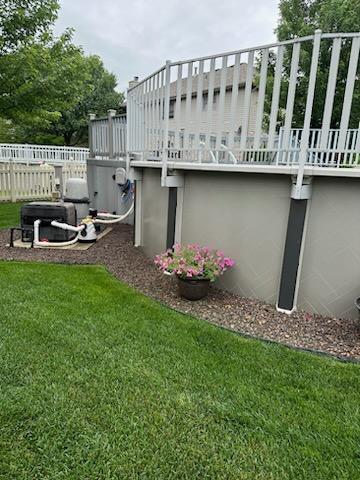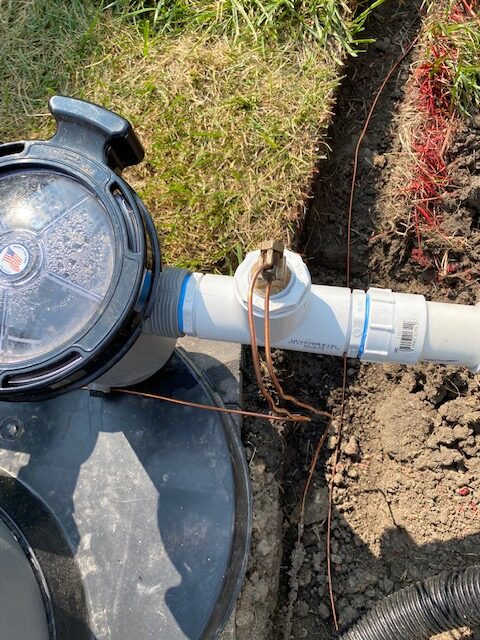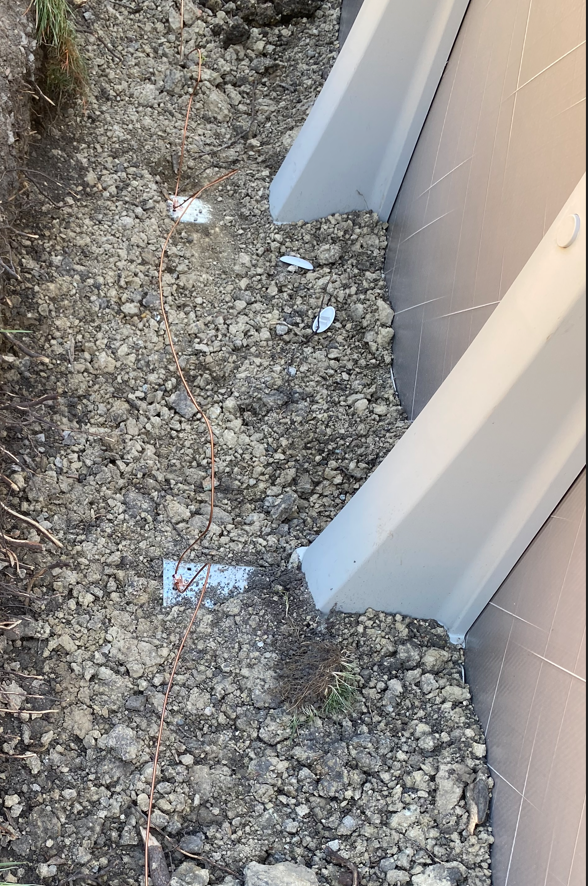
Pass your pool bonding inspection the first time by understanding NEC 680 requirements. Whether you’re gearing up for your first inspection or are a seasoned pro, this guide breaks down what matters. Mastering NEC 680 is crucial to avoiding costly mistakes—and the dreaded red tag. Whether you’re a licensed electrician, seasoned contractor, meticulous inspector, or dedicated DIYer, this guide walks you through every critical step to pass your pool bonding inspection on the first try.
What is Pool Bonding and Why Does it Matter?
Simply put, pool bonding connects all conductive surfaces and applicable components of your pool system—including the pool water, pumps, heaters, and surrounding surfaces—to eliminate differences in voltage potential. Without effective bonding, even a minor electrical fault could cause dangerous shocks or electrocution. Proper bonding ensures everything is electrically equal, protecting swimmers by preventing hazardous current flow.
Essential NEC 680 Requirements for Pool Bonding
Understanding NEC Article 680 is key to passing your inspection. Here’s a clear breakdown:
- NEC 680.1: Defines the scope of pools covered by the NEC.
- NEC 680.21(C): Requires GFCI protection for pool equipment (120–240 volt single-phase).
- NEC 680.22: Specifies distances for GFCI receptacles and lighting equipment—general-purpose receptacles must be no less than 6 feet and no more than 20 feet from the pool’s inside wall. GFCI protected receptacles for pool equipment and pumps specifically must be no less than 6 feet from the inside edge of the pool water.
Need a full breakdown of GFCI code requirements?”
Check out this post GFCI Protection: NEC 210.8 Explained.
Bonding Conductive Surfaces (NEC 680.26)
Passing your inspection hinges on correctly bonding:

- Conductive Surfaces: Including structural steel and the perimeter surface around the pool.
- Perimeter Surface Bonding: Requires bonding at a minimum of four evenly spaced points around the pool. This typically involves a #8 solid copper conductor installed 18–24 inches from the pool’s inside wall, buried 4–6 inches below grade. (See⚠️ NEC Update – below and 680.26(B)(2)(b)(1)(f))
- Alternate Means: When structural steel isn’t available, you’ll need alternate approved bonding methods.
Bonding Equipment and Water
Key components you’ll need to bond include:
- Pool Water: Usually bonded through the skimmer or pump fittings.
- Pump Motors: Double-insulated pump motors typically don’t require bonding—But always check manufacturer requirements—but a #8 copper bonding conductor must still be installed and present for future motor replacements.
- Water Heaters: Check manufacturer specs to determine if bonding is required.
Inspection Checklist for Above Ground Pool Bonding
When conducting a pool bonding inspection, inspectors will look for:

- #8 solid copper conductor installed around the pool perimeter.
- (See ⚠️ NEC Update – below and 680.26(B)(2)(b)(1)(f)))
- At least four evenly spaced structural points connected to the perimeter grid.
- All buried connections listed for direct burial.
- Skimmer or pump water bonding clearly installed.
- Properly spaced receptacles:
- General-purpose receptacles 6–20 feet from the pool.
- Pool equipment receptacles no less than 6 feet.
- Conduit burial meets NEC 300.5 requirements.
Frequently Asked Questions About Pool Bonding
Q: Do I need to bond an above ground pool?
A: Yes. According to the NEC 2020, if your above ground pool is capable of holding water to a depth greater than 42 inches, it is classified as a permanently installed pool (NEC 680.2). Once a pool is considered permanent and includes electrical equipment—such as a pump, heater, or underwater lighting—equipotential bonding is typically required under NEC 680.26.
You’ll need to bond applicable conductive surfaces and parts including:
- The pool frame
- Most metallic equipment
- The pool water itself (via an approved bonded fitting)
This reduces the risk of shock by equalizing voltage differences between conductive parts and the water.
Always verify requirements with both the manufacturer’s installation instructions and your local Authority Having Jurisdiction (AHJ), as local codes or amendments may differ.
NEC Reference:
- NEC Article 680.2 – Definitions (Permanently Installed Pools)
- NEC 680.26 – Equipotential Bonding Requirements
- Even if a pool is classified as storable it must comply with manufacturer requirements and all applicable electrical safety requirements, including GFCI protection.
Q: What size bonding wire should I use around a pool?
A: The NEC requires a minimum of a #8 AWG solid copper conductor for perimeter bonding (See ⚠️ NEC Update – below and 680.26(B)(2)(b)(1)(f)). This conductor must be installed 18–24 inches from the pool wall and buried 4–6 inches below grade.
NEC Reference: Per NEC 680.26(B)(2)(b), when structural reinforcing steel is not available, a minimum of one 8 AWG bare solid copper conductor shall be installed, following the contour of the perimeter surface, 18 to 24 inches from the inside walls of the pool, and secured 4 to 6 inches below the subgrade. (See ⚠️ NEC Update – below and 680.26(B)(2)(b)(1)(f)))
Q: Is bonding the same as grounding?
A: No. Bonding connects conductive parts to equalize voltage potential — it’s not the same as grounding, which connects to earth. Bonding helps prevent differences in voltage potential that could cause shocks or electrocution in or around the pool area.
NEC Reference: NEC Article 100 defines bonding as the permanent joining of metallic parts to form an electrically conductive path that ensures electrical continuity and the capacity to conduct safely any current likely to be imposed. Grounding, on the other hand, is defined as connecting to ground or to a conductive body that extends the ground connection.
⚠️ NEC Update: Why the Bonding Rules Changed
Want a full breakdown of the NEC 680.26 bonding requirements and the recent TIA 23-9 update?
Watch the full video: Pool Bonding Inspection: NEC 680.26 TIA 23-9 Explained | How to Pass Your Pool Inspection
A Tentative Interim Amendment (TIA) is an emergency update to the National Electrical Code issued between official editions. TIA 23-9, approved in October 2023, revised NEC 680.26 to clarify that a single #8 copper wire around a pool is no longer an acceptable method of equipotential bonding in most cases (⚠️ 680.26(B)(2)(b)(1)(f)). This ensures that structural steel or a copper grid system is required for effective perimeter bonding.
For a deeper dive into these updated bonding requirements, check out this excellent article from EC&M that clearly explains the impact of TIA 20-9 on pool installations: Read the full article here.
Instead, the NEC now requires either:
- Structural steel (rebar or mesh – see 680.26) in the concrete deck
- Or a 12″ x 12″ copper grid system – where a single #8 copper wire was previously accepted.
Even if your pool doesn’t have electrical equipment, bonding is still required due to voltage differences from earth and nearby utilities.
If your AHJ has adopted the 2023 NEC and/or the TIA, this is enforceable now.
Are You Ready to Pass Your Pool Bonding Inspection?
By clearly understanding and diligently applying these NEC 680 guidelines, you’ll confidently pass your inspection, ensuring your pool remains safe, compliant, and worry-free. Always confirm the latest NEC requirements and check with your local Authority Having Jurisdiction (AHJ) for any additional requirements.
Stay updated with more practical code compliance insights—subscribe to our newsletter today!